5 Common Spring Tree Pests to Watch for in 2024: Identification and Prevention
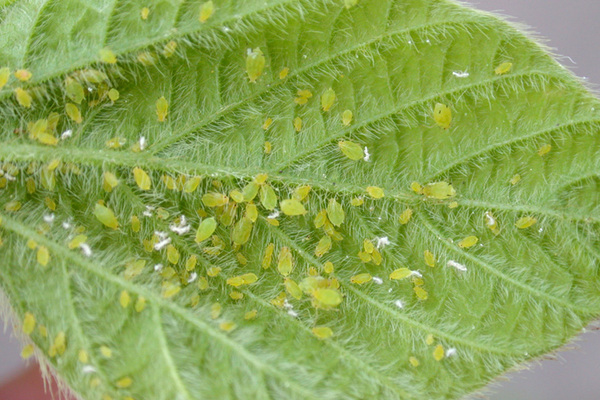
Photo by John Obermeyer, Purdue University
Protecting your Trees from Common Spring Pests
Tree diseases and pests can make an unwanted appearance any time of the year.
The warmer weather in early spring awakens those pesky pests that were dormant during the winter and they are ready to wreak havoc on trees and shrubs. Spring is the best time to get control of the pests and limit the amount of potential damage—contact the experts at Arborist Now for tree care services in San Francisco and surrounding areas before a small problem becomes a big problem.
Spider Mites
Spider mites are common pests in the urban landscape and can inflict serious damage to trees, shrubs and flowers. Both evergreen and deciduous plants may be attacked, though spruce and juniper. Spider mites are not insects but are more closely related to ticks and spiders. Their common name is derived from their ability to produce silk, which most species spin on host plants. Mites are tiny about the size of the period at the end of this sentence. They can also be very prolific, which is why infestations often go unnoticed until plants exhibit significant damage.
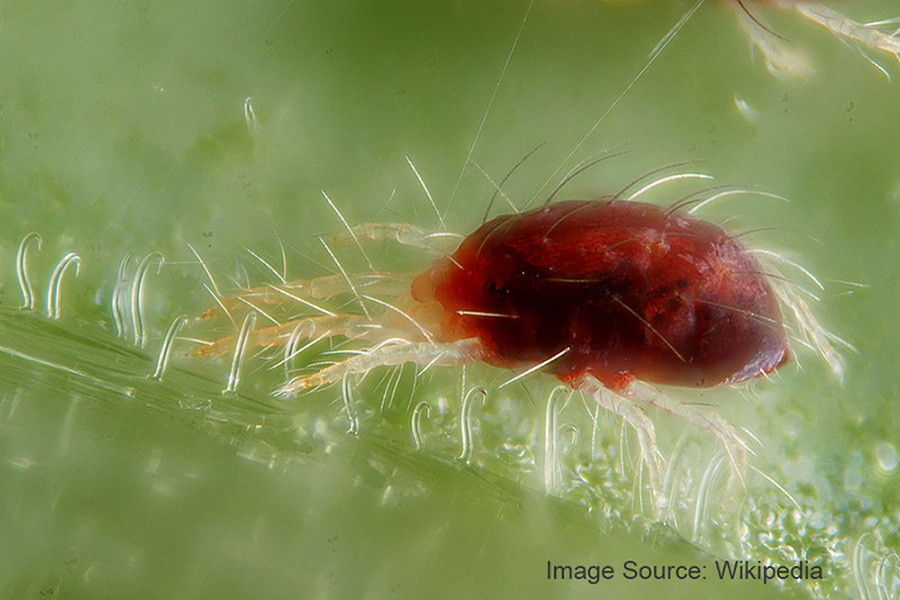
A Microscopic View of a Spider Mite - Image from Wikimedia Commons
Symptoms of spider mite damage:
- Yellow, orange, brown or gray spots appear on leaves
- Leaf drop
- Webbing covering the plant
- Visual confirmation of the presence of mites
Spider mite species seem to be warm weather or cool weather active pests. The two-spotted, European red, honey locust, maple, and oak spider mites are most active in dry, hot summer weather. The spruce and southern red spider mites thrive in cool spring and fall weather.
Lace Bugs
Over a dozen species of lace bugs occur in California. Each feeds on one or a few closely related plant species. Hosts include alder, ash, avocado, coyote brush, birch, ceanothus, photinia, poplar, sycamore, toyon, and willow.
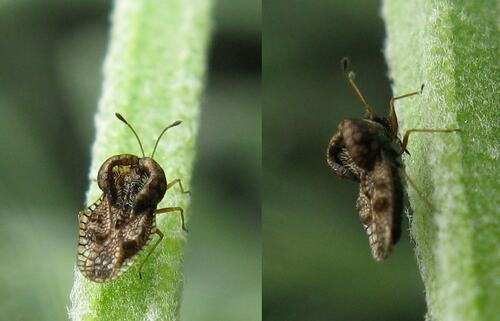
Views of a Lace Bug on a Stem - Photo from Wikimedia Commons
Lace bugs feed by sucking juice from plant leaves. The most common symptom of feeding is the stippled and mottled yellowish foliage. Positive signs of lace bug infestations are the insects, whitish cast-off skins, and/or dark brown tarlike excrement on the underside of the leaves. Damage is most severe on plants in full sun. Lace bug feeding is not a serious threat to plant health or survival. Prolonged high populations of lace bugs may cause premature drop of some leaves and a modest reduction in plant growth rate. On avocado, premature leaf drop may lead to sunburn of some fruit and a subsequent reduction in fruit yield.
Aphids
Aphids, in small numbers, do little damage to a tree; however, under favorable conditions the aphid population can grow very rapidly and cause serious damage to the tree during the growing season. Aphids attack trees by sucking the sap out of the leaves. The symptoms are very visible on the leaves in the form of multiple puckered marks, yellowing, and twisting, which gives the appearance of deformed leaves. As the severity of the aphid infestation increases, leaf drop and twig and branch dieback can be seen.

Yellow Aphids Clustering on a Leaf - Photo by Kelly from Pexels
Both adults and nymphs suck plant sap, which usually causes distorted leaves, buds, branch tips, and flowers. Severely infested leaves and flowers may drop. As they feed, aphids excrete a sweet, sticky honeydew onto the leaves below. This allows a sooty mold to grow, which, in addition to being ugly to look at, blocks light from leaves. Also, some aphids spread viruses as they feed.
Scale
There are many species of scale insects that feed on a wide range of host plants. Scale insects look quite different from other insects. In their juvenile growth stage, they are referred to as "crawlers". As crawlers, they are highly mobile, six-legged, have no protective cover, and are usually smaller than a pinhead. However, at maturity, scale insects are immobile, have no visible legs or antennae, and in the case of armored scales, are covered with a protective shell that ranges from about 1/16 to 3/8 inch in size.
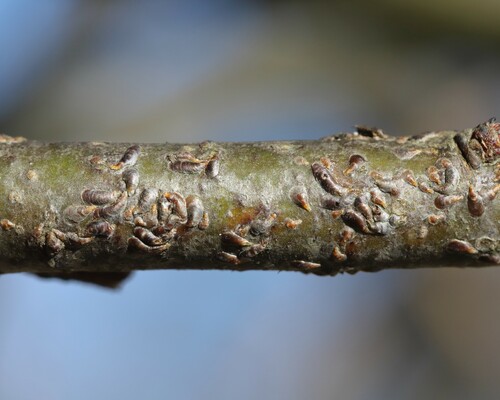
Oystershell Scale, an Invasive Scale Insect that Attacks Trees and Other Woody Plants
Scale insects thrive in warm, dry environments. The scale bug is small, oval, and flat, with a protective tan to brown shell-like covering (scale). Scale generally targets the undersides of leaves and around leaf joints.
The scale insect consists of three types:
- Armored Scale: The armored and soft scale bugs are the most destructive. Armored scales are more difficult to control once mature.
- Soft Scale: Soft scale bugs excrete large amounts of honeydew, which enables the growth of sooty mold, a black-colored fungus that interferes with photosynthesis.
- Mealybug: Mealybugs are easier to control. Scales cannot fly; therefore, dispersal depends on the movement of crawlers. Crawlers may be detected by placing double-sided tape on plant branches.
Cankerworms
Cankerworms, also called inchworms, loopers, or spanworms, are caterpillars that move with a distinctive "looping" motion. Small numbers of cankerworms are present every year, but occasionally, large outbreaks occur. When this happens, cankerworms can cause significant defoliation of a variety of deciduous landscape and forest trees.
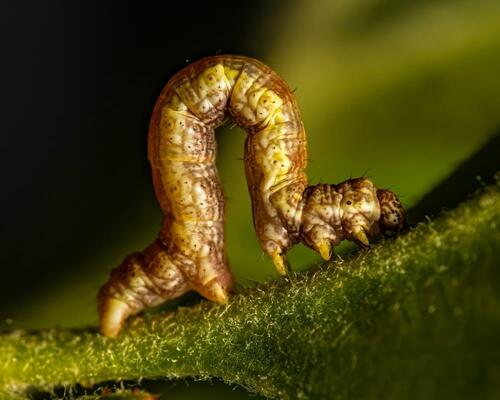
A Cankerworm Crawls Along a Branch - Image by Jon Pauling from Pixabay
Chewed and ragged leaves are the symptoms of cankerworm infestation, causing sudden and unsightly damage in late April through mid-May. However, the biggest problem is the stress brought on by leaf loss at a time when leaves are essential for nutrients for tree growth.
Caterpillars vary in color from green to black. When fully grown, they are approximately one inch long. Because of their small size, the pests are easily blown from tree to tree and property to property.
Conclusion
Remember, it can be difficult for a non-arborist to correctly identify pests. As it is easy to make a costly mistake, it is usually best to rely on an expert to care for tree health.
Early spring is the perfect time to get a head start on making sure your trees are healthy. Make sure your trees are ready to thrive in the coming growing season—call Arborist Now to schedule an inspection of your valuable trees and shrubs for pest infestation. We provide superior tree care in San Francisco and surrounding areas.
Originally Published on April 20, 2017.





